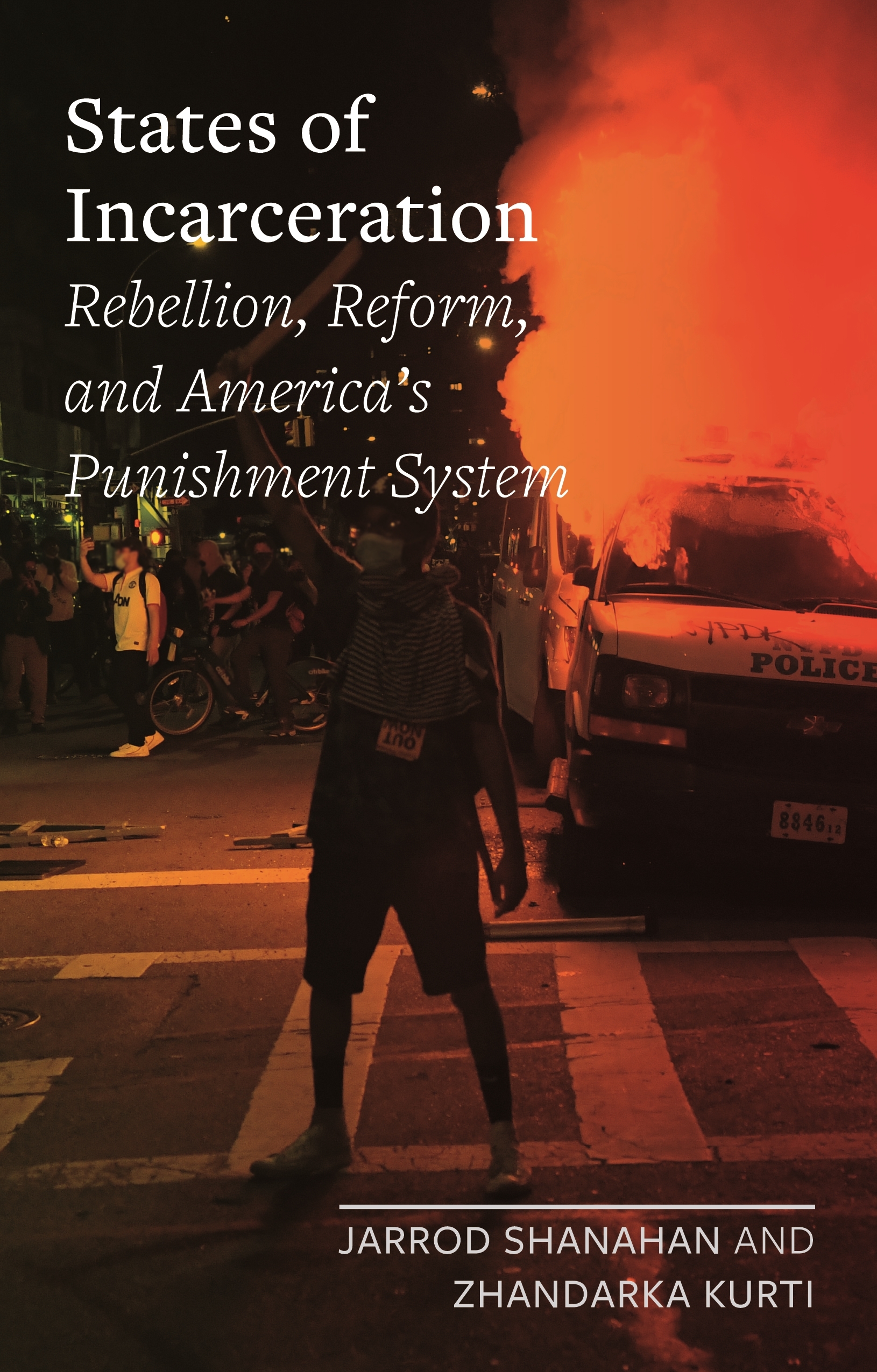Perhaps no other framework better represents the collaboration between liberals and conservatives on criminal justice reform than that embodied in the phrase “Smart on Crime.” The liberal Washington-based think tank the Center for American Progress has foregrounded this concept as an alternative to the tough-versus-soft-on-crime debate. The phase was first popularized by Kamala Harris, now vice president, who cut her political teeth when, with the support of San Francisco’s police unions, she beat out her former boss and progressive district attorney Terence Hallinan for attorney general of California.
Harris published Smart on Crime: A Career Prosecutor’s Plan to Make Us Safer in 2008, expressing a vision for reforming the nation’s criminal justice system, including her preference for so-called diversion of arrested people away from jail and prison, and alternatives to incarceration programs more broadly. Yet as she makes clear in a section of the book titled “Law Enforcement Not Social Work,” drug diversion programs such as Back on Track—which Harris spearheaded as San Francisco’s district attorney to keep low-level offenders out of jail—were not developed out of “pity or compassion.” To counter any critique of being “soft on crime,” Harris justifies the necessity of law enforcement to pursue low-level drug offenders and sex workers and to prosecute parents of habitually truant children. Smart on Crime is chock-full of strategies to reduce costs associated with incarceration and increase public safety by ensuring that the system remains tough on the so-called violent offenders who occupy what she calls the “top of the crime pyramid.” It is a suitable text for someone who proudly proclaimed herself California’s “top cop.”
Since the publication of Harris’s book, the Smart on Crime approach has stood for a cost-centered perspective on criminal justice reform. In 2013 Smart on Crime was adopted by President Obama’s attorney general Eric Holder as the guiding rubric for federal criminal justice reform. Holder maintained that the time had come to rethink mass incarceration and argued for a smarter approach to crime. The five principles of Smart on Crime he outlined were “prioritize prosecution of serious offenses,” reform racial disparities in sentencing, encourage alternative to incarceration programs for nonviolent crimes, improve reentry, and redirect federal resources to violence prevention. Three years later, the Department of Justice claimed that the reforms had worked and that there was a noticeable decline in the federal prison population due to the decision to reform federal prosecution of drug crimes.
Holder’s and Harris’s embrace of Smart on Crime as a program of reforms aimed at low-level arrestees, in the hopes of saving criminal justice resources for more serious arrestees, is actually a page out of the Republican playbook called Right on Crime. The latter national campaign frames mass incarceration as a fiscal problem to be fixed by shrinking government overreach and saving taxpayer money through “cost-effective” approaches to criminal justice. The Right on Crime movement was created in Texas in 2007 through a campaign by the Texas Public Policy Foundation in partnership with the American Conservative Union Foundation and Prison Fellowship. Today dozens of states—including Georgia, Ohio, Kentucky, Mississippi, and Oklahoma—are implementing these conservative criminal justice reforms.
One of the most active supporters of the Right on Crime movement is Newt Gingrich. In 2011 Gingrich cowrote an op-ed in the Washington Post that highlighted the “urgent need to address the astronomical growth in the prison population, with its huge costs in dollars and lost human potential,” calling on his fellow conservatives to “lead the way in fixing it.” Since then, Gingrich has continuously voiced his support for criminal justice reform. He even appeared in Ava DuVernay’s 2016 film 13th, voicing his critique of drug policies that punished crack users disproportionately simply for being Black and poor. In 2016, in a guest column for the Louisiana-based newspaper the Advocate, Gingrich and his fellow conservative Pat Nolan argued against locking up juveniles in adult prisons, stating that “jails and prisons are the graduate schools of crime.”
The conservative push for criminal justice reform came to a head in Texas, which is known to have one of the harshest penal systems in the country, and where Republicans have long prided themselves on being “tough on crime.” Governor Rick Perry was once quoted as saying, “If you come into our state and you kill one of our children, you kill a police officer, you’re involved with another crime and you kill one of our citizens, you will face the ultimate justice in the state of Texas, and that is, you will be executed.” Within the span of five years, Texas built 38 prisons and saw its correctional spending nearly double from $1.4 to $2.4 billion by the 2000s. Even though some may see this as an exorbitant amount, it was still “just 3% to 4% of the state’s total budget—or roughly half of what it spends on highways each year,” as political scientist Marie Gottschalk reported.
For decades, conservatives have promoted privatization schemes to keep incarceration costs low. By 2007 Texas prisons were facing a crisis of overcrowding and officials feared they would not have enough prison beds. In response to this crisis, the Texas Public Policy Foundation launched the Right on Crime campaign, which advocates “conservative solutions for reducing crime, restoring victims, reforming offenders, and lowering taxpayer costs.” TPPF and Right on Crime conducted research which demonstrated that the state would have to spend $2 billion in new prison construction to accommodate projections that the state would need 17,000 new beds by 2012. They argued against the proposal and instead pushed for cheaper alternatives. In response to this pressure, lawmakers ended up defeating the proposal to construct new prisons and instead expanded probation and parole, along with substance and mental health treatment, to divert people to community supervision.
The Texas case was widely seen as a win for the Right on Crime coalition. Overnight the state was transformed into a model for national criminal justice reform, even receiving accolades from well-established liberal organizations such as the ACLU. In its 2011 report “Smart Reform Is Possible,” the ACLU praised Texas as an example of how states can reduce incarceration and corrections budgets while upholding the sanctity of public safety. Since 2007 thirty states have followed Texas’s lead and reduced lengthy prison sentences, strengthened diversion and alternatives to incarceration programs, and eliminated mandatory minimum sentencing.
More from our decarceral brainstorm
Every week, Inquest aims to bring you insights from people thinking through and working for a world without mass incarceration.
Sign up for our newsletter for the latest.
Newsletter
But reforms in Texas and elsewhere have not been the magic bullet that conservatives and liberals have claimed they are. Instead, as Gottschalk argues, the Texan model has emerged as a way to run mass incarceration “on the cheap.” Gottschalk shows that the eagerness of conservatives and their allies to lend legitimacy to their smart-on-crime efforts relied on “a selective reading” of incarceration figures which does not take into account the new prison beds that have been built to house parole violators and those undergoing substance abuse treatment. Further, as has been the case nationally, powerful organizations like the bail industry and police unions have opposed various reform efforts. Above all, the adoption of alternatives means to surveil and confine people in the community, such as electronic monitoring, house arrest, and routine drug testing—all of which have been pushed by private contractors—have been embraced by states and counties seeking to save money while continuing to maintain a punishment regime. On paper, the people caught in these coercive systems can be celebrated as freed from jail and prison. But they have not been freed from the meshes of the system and remain very much in thrall to a punishment apparatus that surveils and limits their mobility, at best, and at worst leads right back behind bars.
Looking at state expenditures on corrections, a key talking point that has united conservatives and liberals, Gottschalk notes a paradox: while, since the 1970s, so-called corrections as a share of state expenditures have risen second to Medicaid, they nonetheless remain a small percentage of overall state budgets. For example, while corrections budgets oscillated between 2 and 3 percent of state budgets between 1982 and 2010, state spending on education was between 29 and 33 percent and public welfare between 22 and 25 percent. This has, however, not stopped many state lawmakers and reformers from adopting the language of fiscal concerns to push for reforms. Yet, as Gottschalk and other scholars such as Hadar Aviram, Ruth Wilson Gilmore, Christopher Seeds, and Sarah Cate have emphasized, the fiscal argument has done very little to end mass incarceration and instead has led to a reconfigured carceral state that continues to skim at the top—namely, by recalibrating the sentencing of nonviolent offenders and continuing its commitment to locking up and punishing so-called violent offenders.
Perhaps no piece of legislation is more emblematic of these pitfalls than the passage of the First Step Act, which drew praise from conservatives and liberals alike. The act was part of a strange political moment when President Trump, who had run on a platform of “law and order,” undertook notable reforms to the punishment system. Even as he undid Obama-era reforms of policing, Trump signed this law aimed at reforming federal prisons and sentencing guidelines, notably shortening mandatory minimums for nonviolent drug offenders, easing “three strike” laws, restricting the use of restraints on pregnant women, mandating so-called de-escalation training for corrections staff, and increasing “good time” credits from forty-seven to fifty-four days per year. The bill was cosponsored by Vice President Mike Pence, White House senior advisor Jared Kushner, and Democratic New Jersey senator Cory Booker. It was even endorsed by the Fraternal Order of Police. The legislation released certain federal prisoners, based on a complex eligibility calculus—which, as Gottschalk argues, does very little to reform sentencing guidelines, since the vast majority of those incarcerated are in state and county facilities, not federal prisons.
In short, despite the rosy rhetoric surrounding it, the First Step Act should not be confused with a move away from hyper-punitive politics in Washington, D.C. The centerpiece of the act was the adoption of risk-assessment tools that heavily weighted defendants’ criminal histories to calculate whether they are eligible for release. Risk-assessment tools are widespread across all carceral institutions today. Elsewhere, we have examined how risk-assessment tools reinforce race- and class-based inequalities and are popular attempts to privatize and offload the responsibility to punish from the state to third-party organizations. In this instance, we see risk assessment also being used to further drive the distinction between violent and nonviolent offenders, the latter seen as the only ones worth saving from the clutches of the carceral state. The reliance on risk assessment tools or algorithms to predict future criminal behavior also dovetails with liberal commitments to using data and technology to create a smaller, safer, and fairer system of justice. The result is not a lessening of punishment, however, but simply a transformation of the carceral state at a time when the politics of cutting public expenditures no matter what has finally come to prisons.
Reprinted with permission from States of Incarceration: Rebellion, Reform and America’s Punishment System by Jarrod Shanahan and Zhandarka Kurti, published by Reaktion Books Ltd. Copyright © 2022 by Jarrod Shanahan and Zhandarka Kurti. All rights reserved.
Image: Kyle Cleveland/Unsplash



